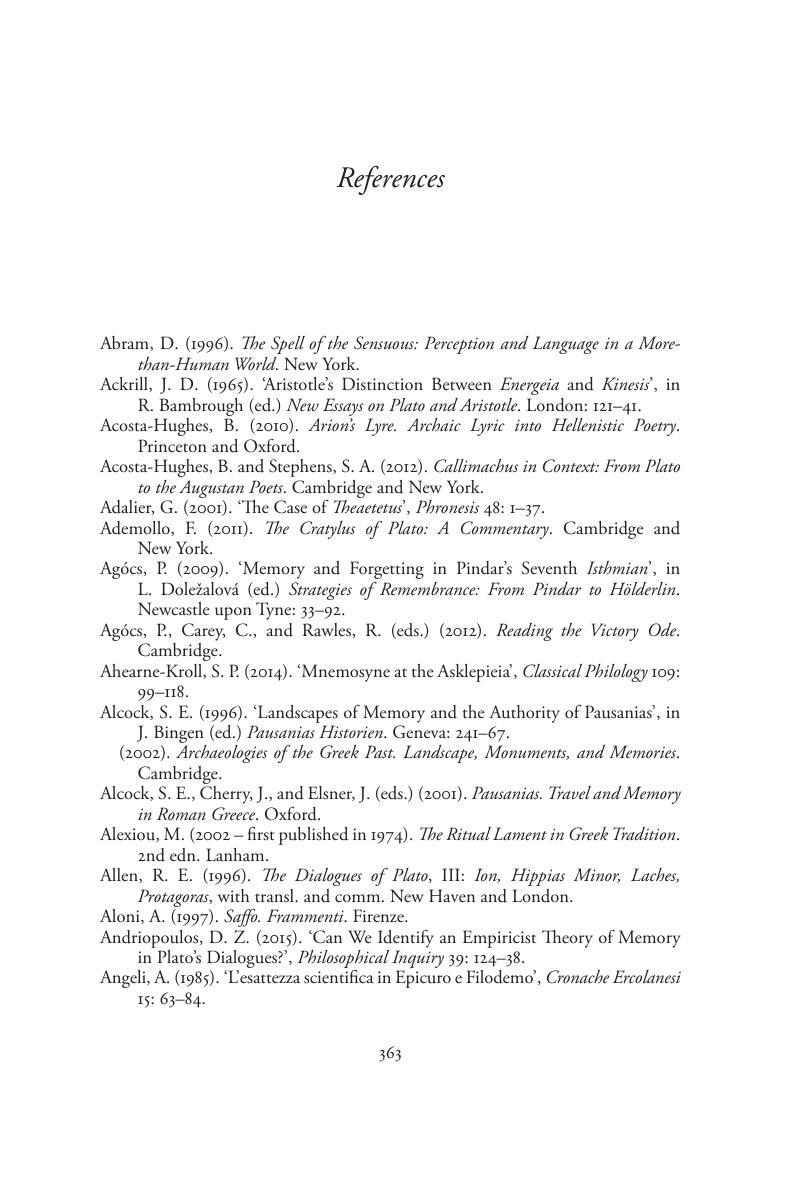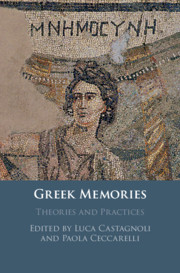Book contents
- Greek Memories
- Greek Memories
- Copyright page
- Contents
- Contributors
- Abbreviations
- Introduction
- Part I Archaic and Early Classical Configurations of Memory
- Part II Memory and Forgetting in the Classical Period
- Part III Hellenistic Configurations of Memory
- Part IV The Imperial Period: Continuity and Change
- Part V Envoi
- References
- Index Locorum
- Index
- References
References
Published online by Cambridge University Press: 21 February 2019
- Greek Memories
- Greek Memories
- Copyright page
- Contents
- Contributors
- Abbreviations
- Introduction
- Part I Archaic and Early Classical Configurations of Memory
- Part II Memory and Forgetting in the Classical Period
- Part III Hellenistic Configurations of Memory
- Part IV The Imperial Period: Continuity and Change
- Part V Envoi
- References
- Index Locorum
- Index
- References
Summary

- Type
- Chapter
- Information
- Greek MemoriesTheories and Practices, pp. 363 - 406Publisher: Cambridge University PressPrint publication year: 2019



